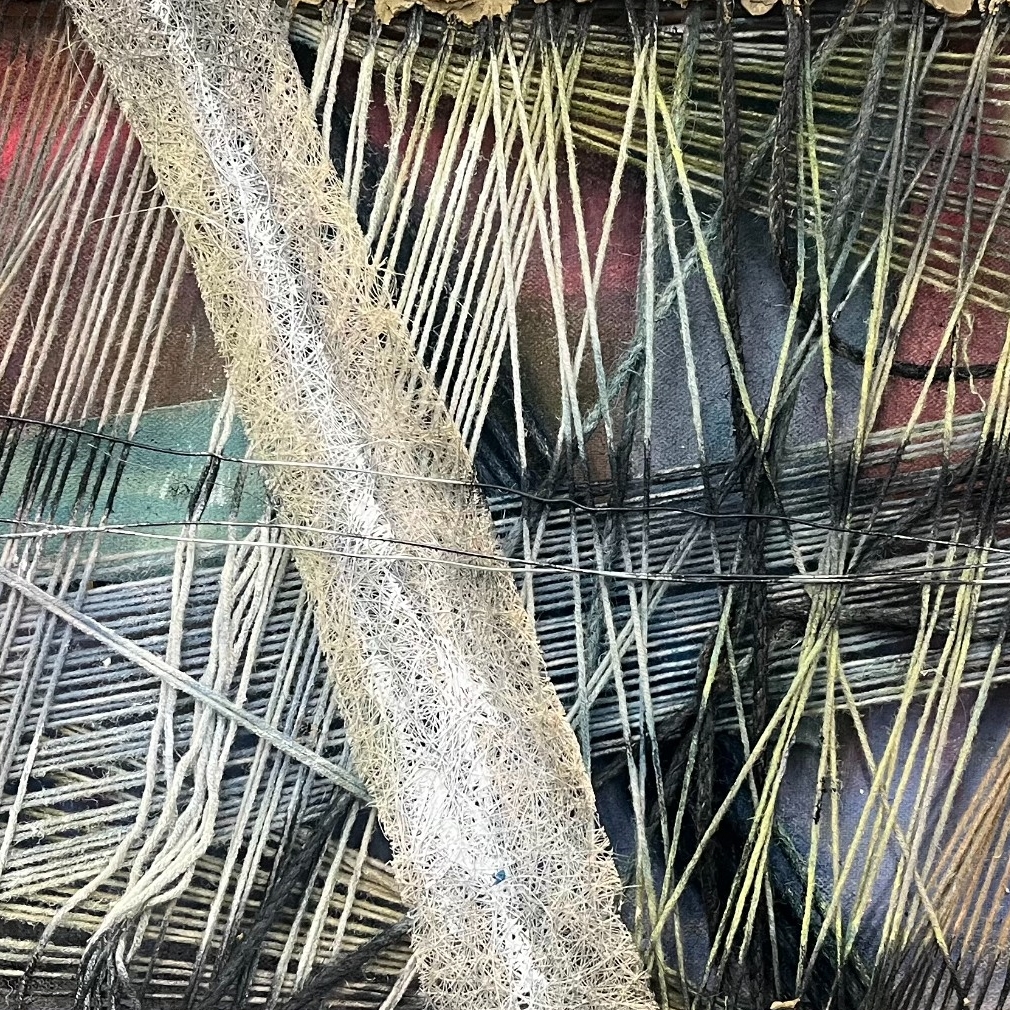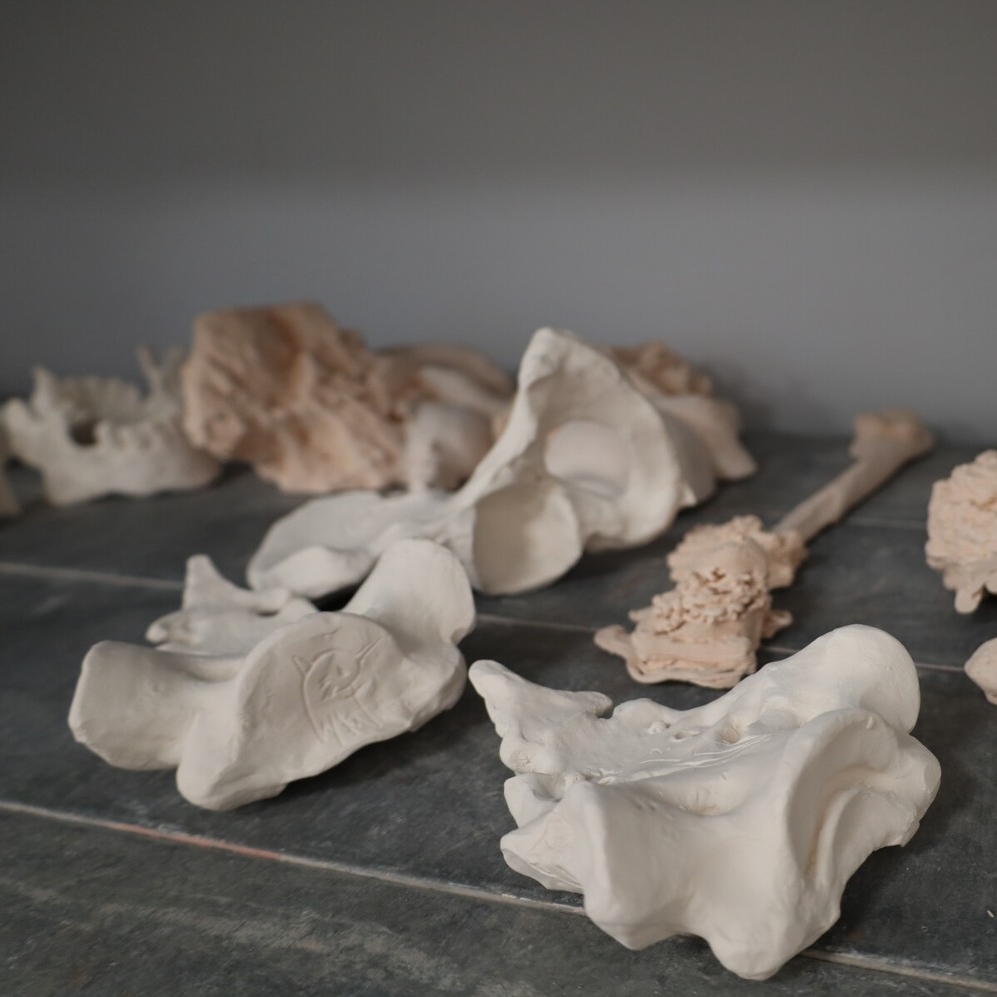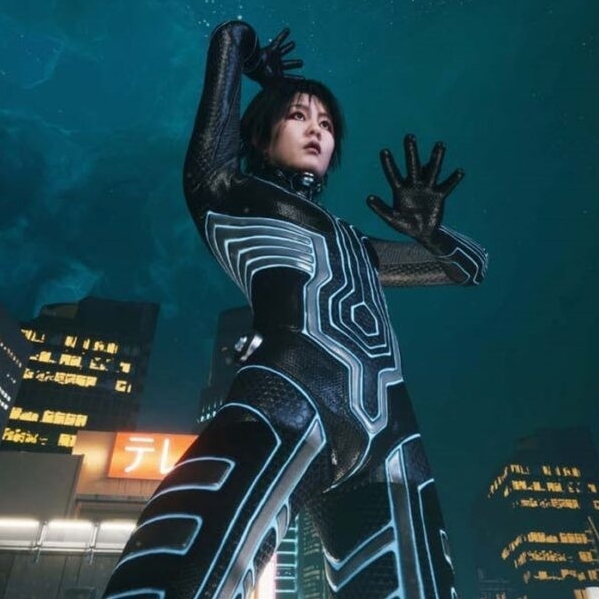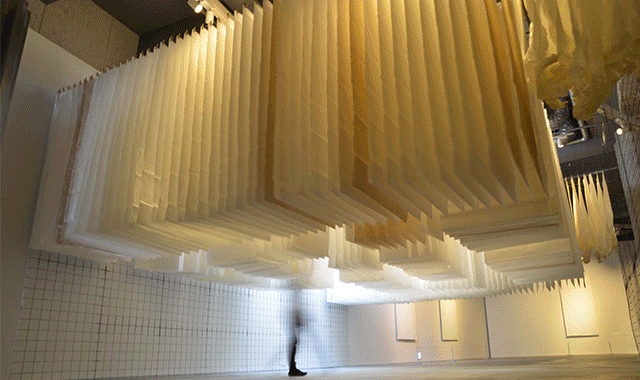
Just as China has managed to bring the COVID-19 under control, the western world has gradually become the hardest hit area from the outbreak. At this critical moment when news about the closure of museums and galleries has surfaced, there is a petition signed by art students for the refund of tuition fees and the financial crisis faced by several art schools begin to flood influential news outlets. When most of the media focuses on the reporting of mainstream western institutions, the COVID-19’s impact on overseas Chinese art groups in the pandemic was neither covered by the western media nor by the domestic media. Therefore, CAFA ART INFO specially interviewed four Chinese art practitioners based in New York to learn about the COVID-19’s impact on the small and medium-sized galleries, non-profit art spaces and online organizations led by them. Besides, the interviewees also shared how they are going to adjust the original operating model and develop long-term plans during the outbreak and how the pandemic inspires them to reflect on their roles and practices.
How exhibitions and programs were affected
regardless of the prevention of the pandemic.
As the COVID-19 outbreak started in China at the beginning of this year, Chinese communities in New York realized the severity of the epidemic ahead of other ethnic groups. Knowing that the “disaster” would soon strike New York, they started to work on pandemic prevention relatively early on.

"A Room of One’s Own" installation view.
Photograph by Huang Jingyao. Courtesy of Fu Qiumeng Fine Art.

"The Null Set ∅ " installation view. Photograph by Huang Jingyao.
©Feng Mingqiu, courtesy of Fu Qiumeng Fine Art.
Fu Qiumeng, the founder of Fu Qiumeng Fine Art (a New York-based gallery that primarily represents Chinese contemporary ink art), revealed in an interview with CAFA ART INFO that the COVID-19 outbreak in China had allowed her to foresee the upcoming pandemic in New York and plan ahead of time: there was no opening scheduled for the group exhibition on the Chinese contemporary ink art in March, and the show can only be viewed by appointment. “The group exhibition was in line with the schedule of Asian Art Week in New York (March 12-19),” Qiumeng explained why she did not include any public events accompanying the exhibition during the early preparation stages. “Consideration has been given to our customers who all have a deep relationship with China, we believe that many people must have returned from a recent business trip to China."
Qiumeng originally planned to have the artists interact with spectators in the form of an "elegant gathering", replacing a crowded art opening with several small-scale sharing sessions, with two or three people entering each time. "This type of viewing experience would align with our interest in exploring the relationship between the present and the past," Qiumeng said. "While contemporary audiences view artworks in public spaces, Chinese literati viewed art privately."
Even though this cautious and thoughtful appointment-based exhibition viewing had taken into account the need to minimize crowding, it was not implemented. After the World Health Organization (WHO) officially announced the COVID-19 outbreak a worldwide pandemic on March 11, the Metropolitan Museum of Art together with other major art institutions and galleries shut down one by one. “Our entire art community has stopped working," Qiumeng explained why she decided to cancel the appointment-based exhibition viewing. “Also, I don't want to expose artists to risks.”
Financial dilemma caused by the pandemic
Qiumeng admitted the sales volume of the primary market gallery that she runs will be affected more directly by COVID-19 pandemic than those dealing with the secondary market. “We do not represent artists such as KAWS, who has been already very well-known in the secondary market led by big auction houses. We have to educate museum curators and collectors about the historical significance of our artists through face-to-face communication, and thus help them to land high-profile positions in the industry.” Qiumeng considers collectors’ behaviors in the primary market as experience consumption, “Now there is no way to have such direct interaction with people. "
Echo He, who has worked for Pace Gallery in New York for ten years and founded Fou Gallery in 2013, also accepted an interview with CAFA ART INFO. When being asked to talk about the capital turnover, Echo's attitude was relatively optimistic: "Fou Gallery has always been operating in a low-key fashion and does not follow a large-scale commercial operation. Things would be fine if we tightened our budget a little bit and adapted flexibly to changes. "
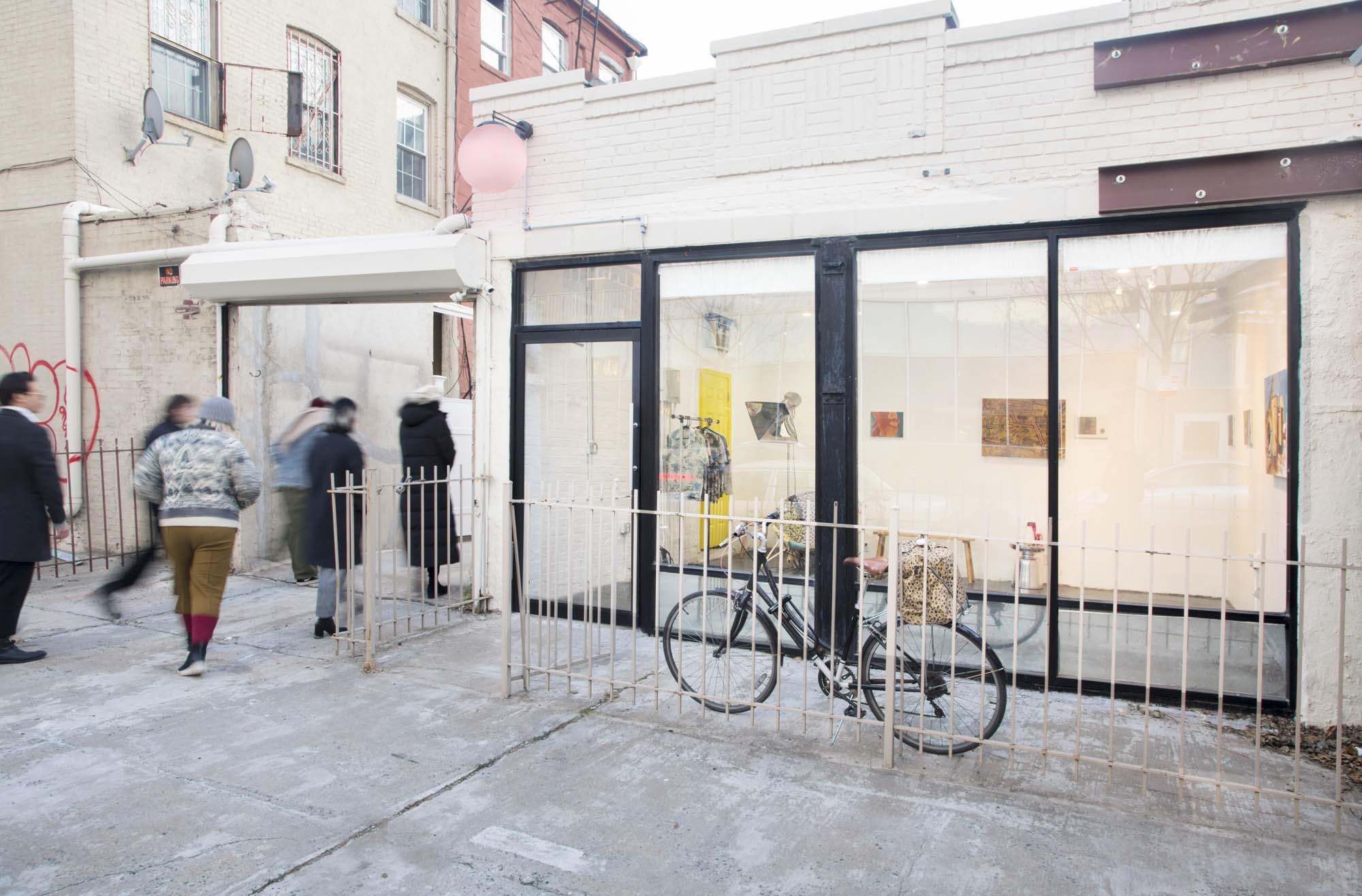
SLEEPCENTER’s new space in Brooklyn. Courtesy of SLEEPCENTER.
Except for the decline in sales that galleries are facing, many non-profit art spaces have also cancelled or postponed projects that could have generated revenue to support space operations. Lin Rui, who has run SLEEPCENTER a non-profit art space in New York for five years, revealed to CAFA ART INFO that a series of social enterprise projects planned to be launched in 2020 with the support of SLEEPCENTER has been affected severely by the COVID, including a project of place-making (activation of abandoned space) in Beijing, and several Asian galleries’ landing projects in New York. The consultation fee earned from these projects could have funded SLEEPCENTER to transform its operational model. “We realize that in this era, it is impossible for a non-profit organization to rely solely on grants and patrons as the main source of income," explained Lin Rui. "We want to go beyond this unsustainable model.” However, as the space can only be funded after the completion of those projects, the COVID-19 has greatly slowed down this transition. “We have started planning to postpone many projects since the end of 2019," Lin Rui said. "Taking into account the current situation, this impact may last until May and June.”
As revenue drops, how to cover the high rents in New York becomes the biggest challenge for those who run art spaces. Faced with this problem, Lin Rui joined an online petition asking for rent suspension initiated by the Senate Deputy Leader while actively negotiating acceptable rents with his landlord.
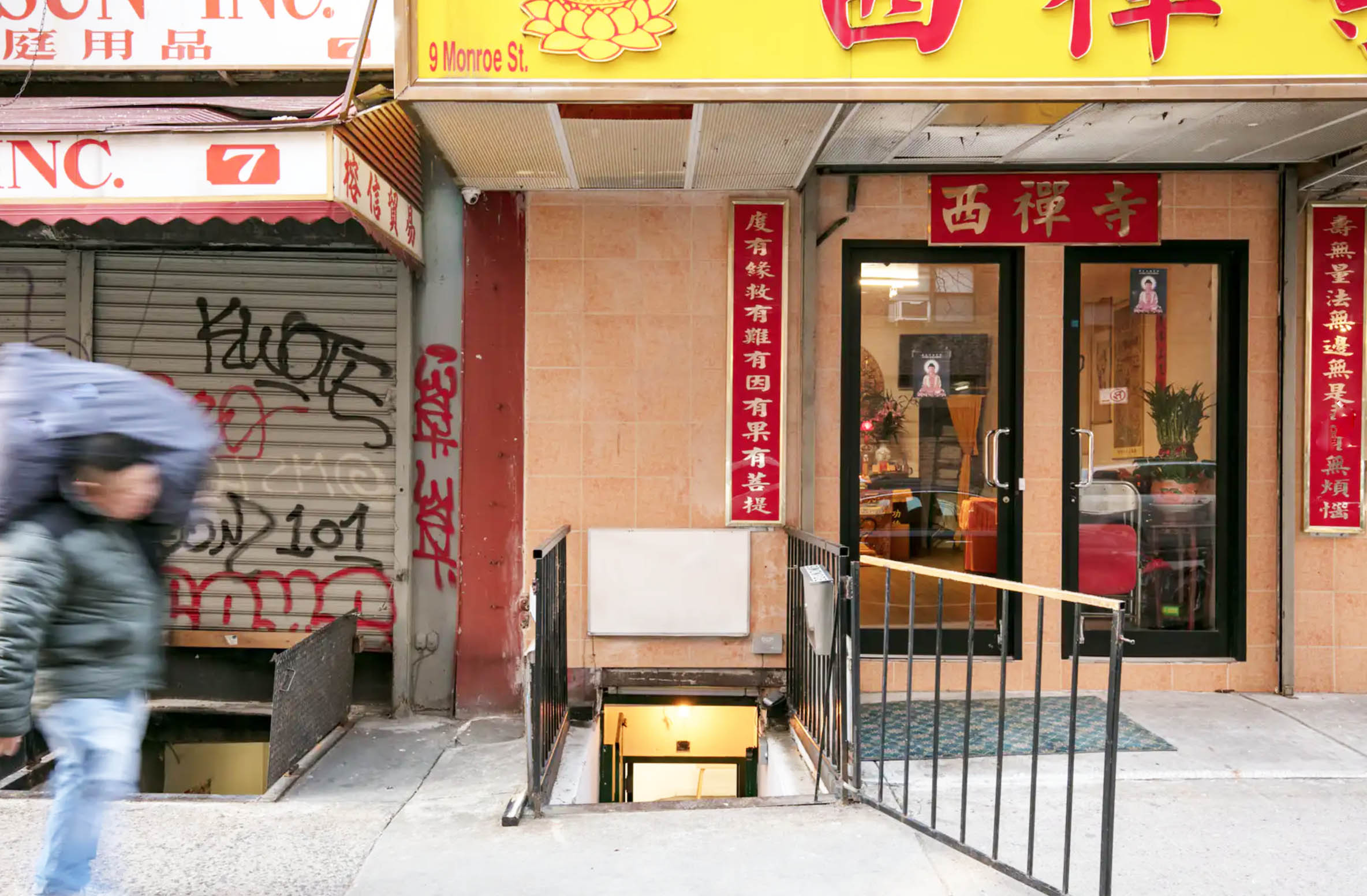
SLEEPCENTER’s space in Chinatown. Courtesy of SLEEPCENTER.
As a particular type of small business, galleries seem to have another solution which cannot be adopted by non-profit space, namely to apply for subsidy grants and emergency funding for small business. However, Echo explained to CAFA ART INFO that it is difficult for the art industry to meet the application requirements of government subsidies for small businesses. The New Art Dealers Alliance, which Echo joined earlier, calls on the government of New York to adjust the funding scheme to the needs of art practitioners, including rent reduction and direct funding. “The art industry is very different from the catering and retail industries. If examined under a one-size-fits-all standard, few galleries can get these funds," Echo said. “Notwithstanding, the art industry is one of those most severely affected.”
Time to build online platform and digital archives
Although the contemporary art world has been enthusiastic about online exhibitions in recent years, the huge amount of time and effort required by physical exhibitions and programs has prevented galleries, museums, and art fairs from incubating a better platform for digital presentation. This pandemic has obviously propelled the entire art industry to look for a more diverse and effective way for art to be felt in the virtual world, rather than treating online exhibitions as a vague concept.
In terms of online selling, Fou Gallery has responded in a timely manner. According to Echo, although many previous transactions were conducted online, the method was rather traditional and mechanical: collectors usually made their decisions according to the catalogs that gallery staff sent out through WeChat or email. Two of Wendy Letven's works on display were sold this way. After the gallery space closed, Fou Gallery’s partner and art director Lynn Hai designed and released an online gallery providing an immersive experience.
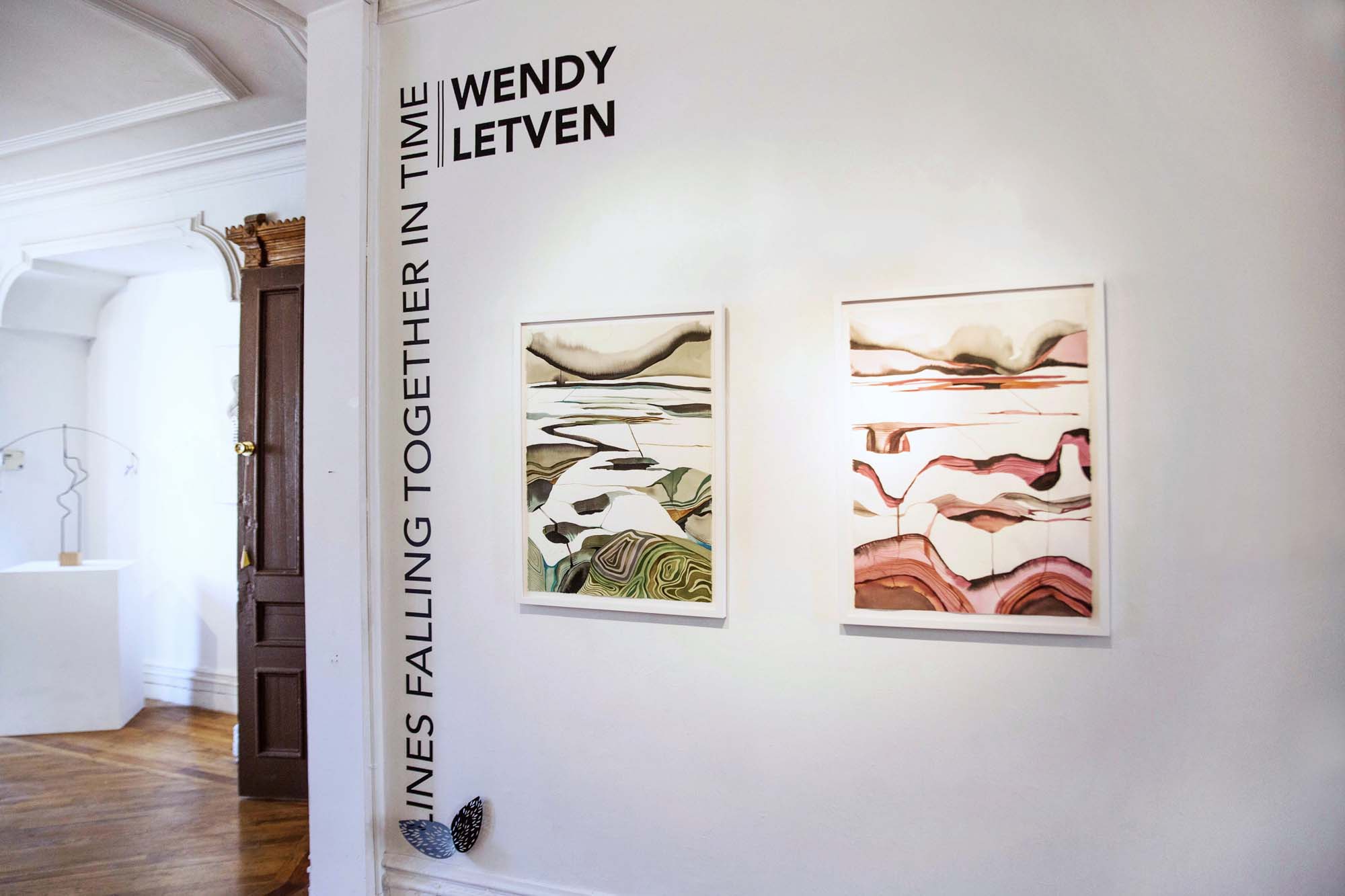
"Wendy Letven: Lines Falling Together in Time" installation view.
Photograph by Lynn Hai.©Wendy Letven, courtesy Fou Gallery.

"Wendy Letven: Lines Falling Together in Time" installation view.
Photograph by Lynn Hai.©Wendy Letven, courtesy Fou Gallery.
Lin Rui said in the interview that the content placed by art institutions and galleries on their websites had not been effective enough in terms of enhancing the general public’s understanding about art. Considering archiving and researching projects that non-profit art organizations often deal with, Lin Rui believes that the public will have a better learning experience when more information is available online. “Now there is an opening, I don’t want to see it close after the pandemic passes," Lin Rui said. “The online presentation reflects the actual strength of institutions and galleries, and it takes time to optimize."
For Qiumeng, who temporarily stopped all gallery activities, she finally gets the time to organize academic archives and begin a long-planned project: Integrate the domestic media's coverage of artists represented by the gallery into its own newsletter, and help collectors to understand the art ecology of China. Qiumeng believes that this type of work that involves writing and documenting can increase the value of artwork in the long run.
After interviewing the three art practitioners who run physical art spaces in New York, CAFA ART INFO also learned that a non-profit academic community named “Trigger” has been conducting online panel discussions between Chinese artists and American artists. As an important part of the Chinese art community in New York, “Trigger” was initiated by art students, artists, and a halo of interested parties with similar educational backgrounds in the United States. Cai Xingyang, the founder of “Trigger”, told CAFA ART INFO during the interview that online tools had already been used at times when Chinese contemporary artists were invited to join the conversation who cannot pay a visit to NY.

Ni Youyu’s artist talk at School of Visual Art. Courtesy of Trigger.

Ni Youyu’s artist talk at School of Visual Art. Courtesy of Trigger.
Xingyang suggested that the participation experience improved after the events switched from being semi-offline and semi-online to being completely online. “I feel that we have now drawn closer," Xingyang said, “it is no longer that divisive, like the guests are staged while audiences are sitting at the back.” Xingyang expressed his optimism about the future of such online art events. He explained: “Online events do not have the rigid form that live events always keep. Instead, it creates a form of communication which is light and handy, and thus helps participants to stay sober.”
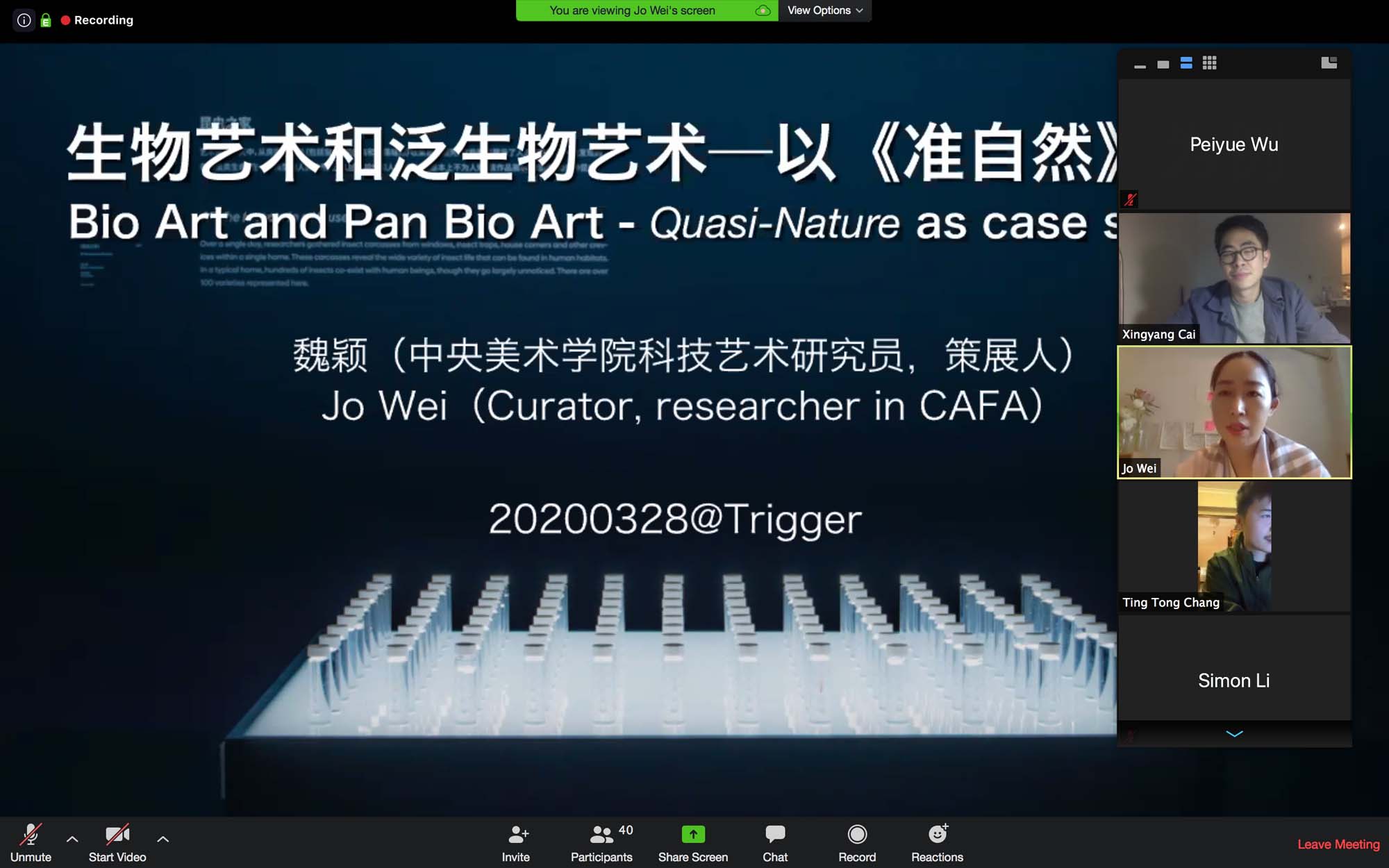
Screenshot of Trigger’s artist panel held on Zoom. Courtesy of Trigger.

Screenshot of Trigger’s artist panel held on Zoom. Courtesy of Trigger.
Breaking through the cultural strata through cooperation and dialogue: the world has never been so connected
While the COVID-19 pandemic has created a human crisis, it also provides an opportunity for the Chinese art community in New York to break through its original cultural strata and truly participate in local social and public discussions happening here.
Echo told CAFA ART INFO about N95 FOR NYC, a mutual aid group initiated by several Chinese art practitioners based in New York. This group collected funds from collectors of major galleries, as well as other art practitioners in New York, purchased personal protective equipment (PPE) from trusted suppliers in China and distributed them to various hospitals in New York. Echo revealed that the first batch of PPE that had been purchased included 10,000 N95 respirator masks, 20,000 general surgical masks and 350 medical protective overalls and they would arrive in New York in early April. “In the past few days, I have cleared away a lot of blind spots in medical knowledge," said Echo, who has been actively learning about each implementation section of the donation. “There are questions such as what kind of documents we need to sign when donating to hospitals, which supplier is the best option, and how to ensure that the supplies can be delivered to the hands of frontline healthcare professionals without too many bureaucratic layers.” Echo also suggested that in the future, it is better to send small-scale donations directly to small clinics, which often cannot compete with large hospitals in terms of seeking resources.
As China has been at the center of Western mainstream media coverage since the COVID-19 outbreak started, the Chinese art community in New York has never been so enthusiastic about tracking the US media coverage of one particular event from beginning to end and therefore has a deeper understanding of strategies behind the US media operation, as well as the drawbacks of the public opinion environment and the medical social security system of the United States. In this regard, Lin Rui said in the interview that he hopes that through this incident, the mid-career Chinese artists, as well as the younger generation, could have a "parallel perspective" to look at the world, understand the differences between countries and have more equal communication with American peers. “I hope that we no longer look up to (everything in the United States) with strangeness and distance,” Lin Rui said. “If we approach culture here with a more open and peaceful mentality, we may get more.”
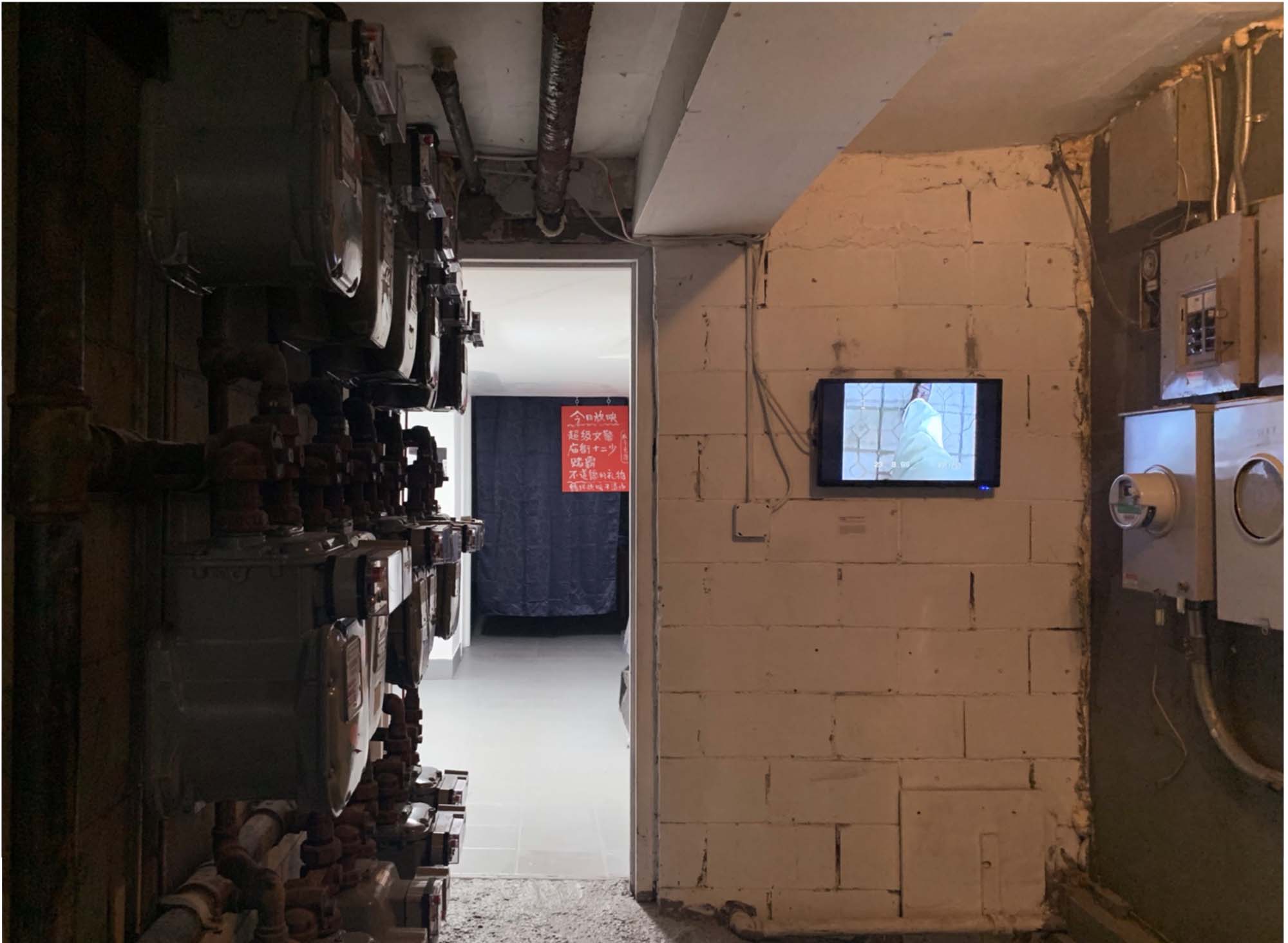
"Juchuan Li: Wuhan Club" installation view. Courtesy of SLEEPCENTER.
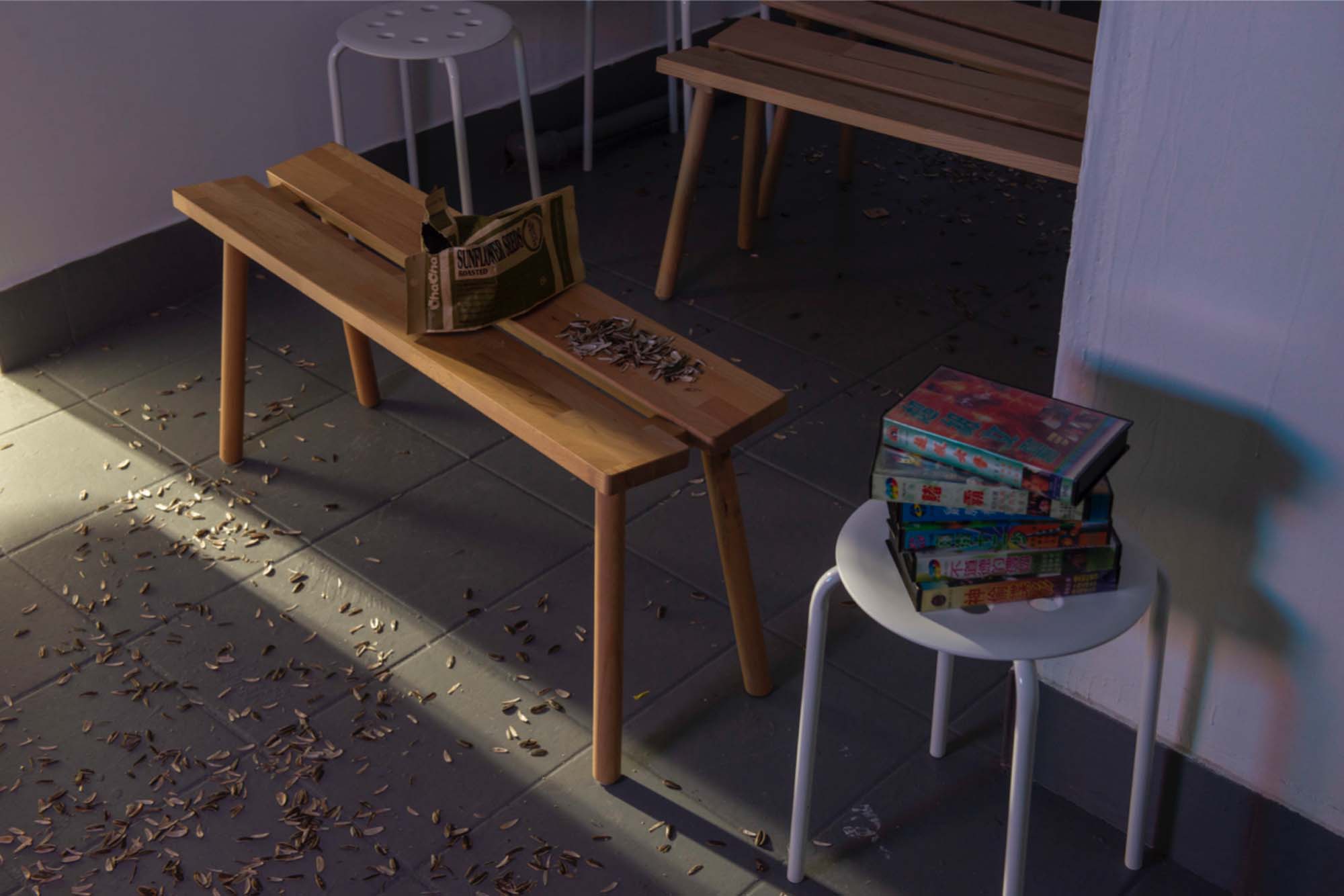
"Juchuan Li: Wuhan Club" installation view. Courtesy of SLEEPCENTER.

"Juchuan Li: Wuhan Club" installation view. Courtesy of SLEEPCENTER.
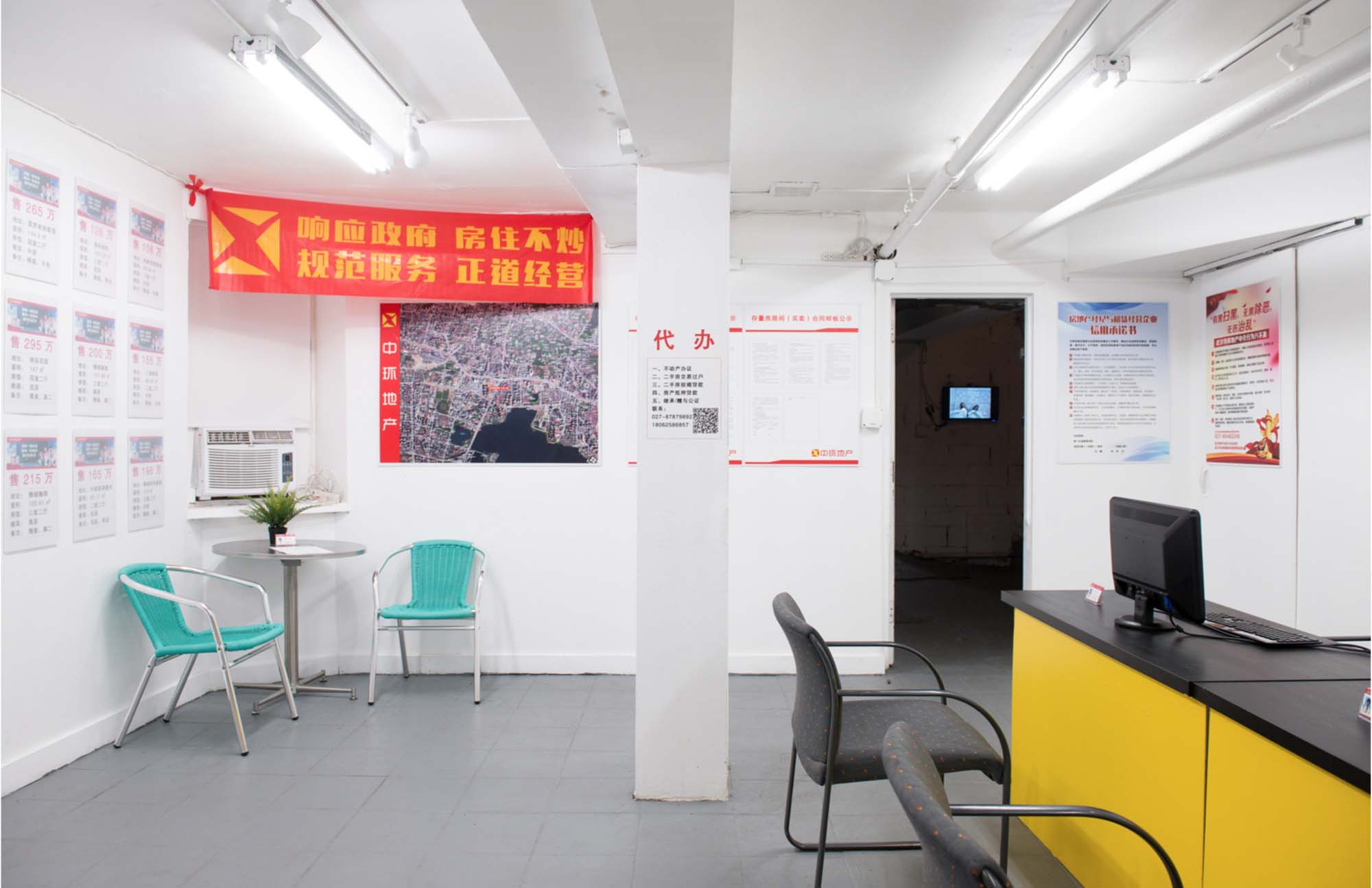
"Juchuan Li: Wuhan Club" installation view. Courtesy of SLEEPCENTER.
As the COVID-19 pandemic has caused the cancellation of major exhibitions around the world, Lin Yan, an artist represented by Fou Gallery, recently brought a large installation to “Clouds Gathering and Unfolding”, an exhibition held by Lakeside Art Museum in Japan. According to Echo, the planning of the exhibition started in January, but the outbreak prevented the curatorial teams in China and New York from traveling. Under quarantine, they used WeChat groups to communicate about the modification of layout sketches, the shipping arrangement, the design of the catalog, and so on. In the end, the Japanese team purchased material and installed the work according to the proposal given to them which had been translated into Japanese.
The global series "Regeneration of Hope" had already landed in Wanying Art Museum (Shijiangzhuang) earlier, where Lin Yan constructed a maze with hundreds of rice paper hanging from the ceiling. Echo read out the artist statement written by Lin Yan at that time to express her recent feelings: "The path is very narrow. As you walk forward, the sound of the paper will follow. Look up, you can see a line of sky. Isolated, we still share the same sky and water. "
The rest of interviewees also mentioned the decrease in global carbon emissions, believing that the pandemic may be a form of self-protection for the planet. At the end of the interview, Echo said that the pandemic made her and her partners more determined about the 15-year plan for the gallery: “We will continue to explore a more decentralized state of being, build an art space far from the hustle and bustle, and integrate art with nature.”
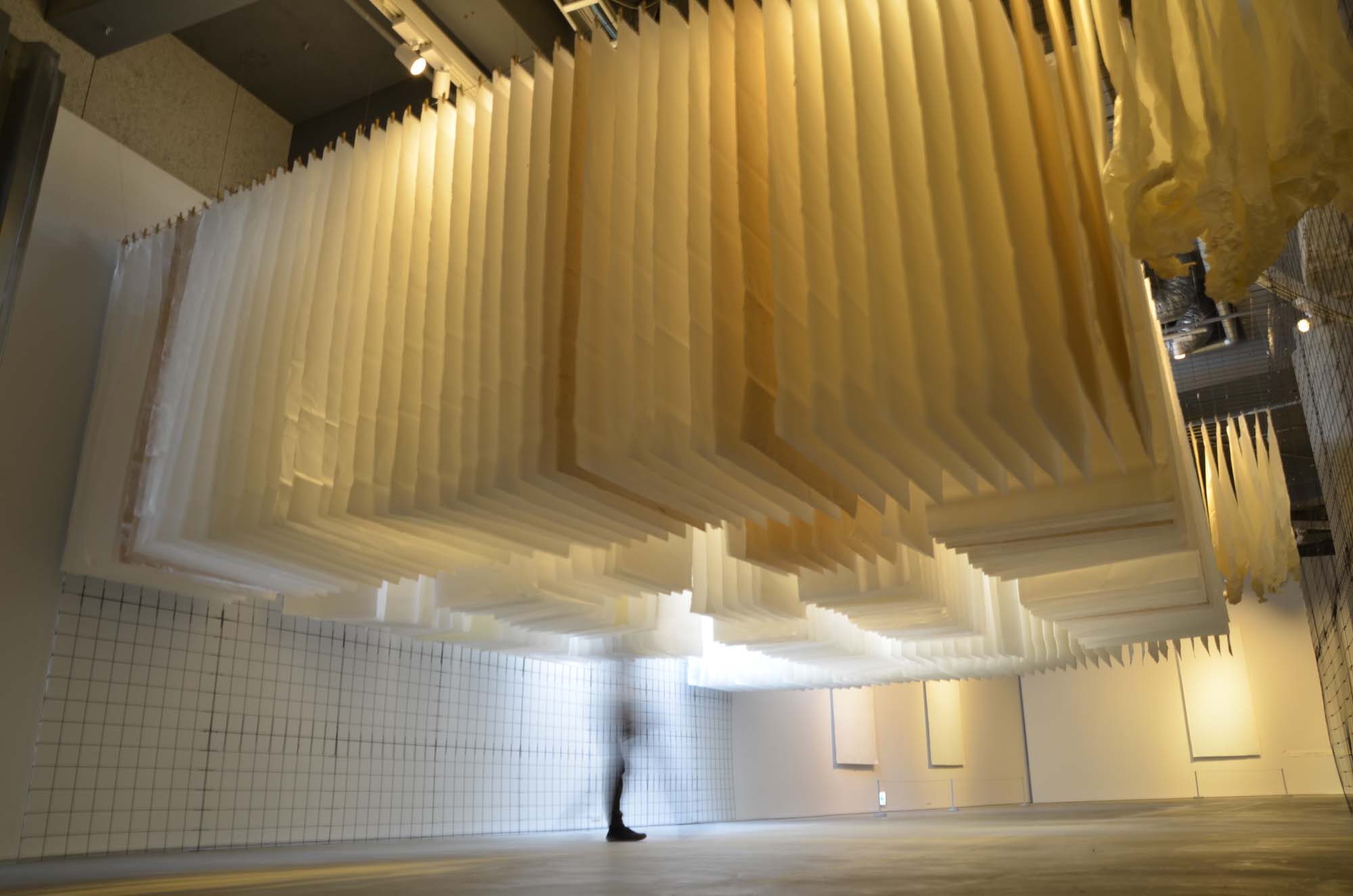
Installation view of Lin Yan’s work at Lakeside Art Museum, Japan. Courtesy of Fou Gallery.
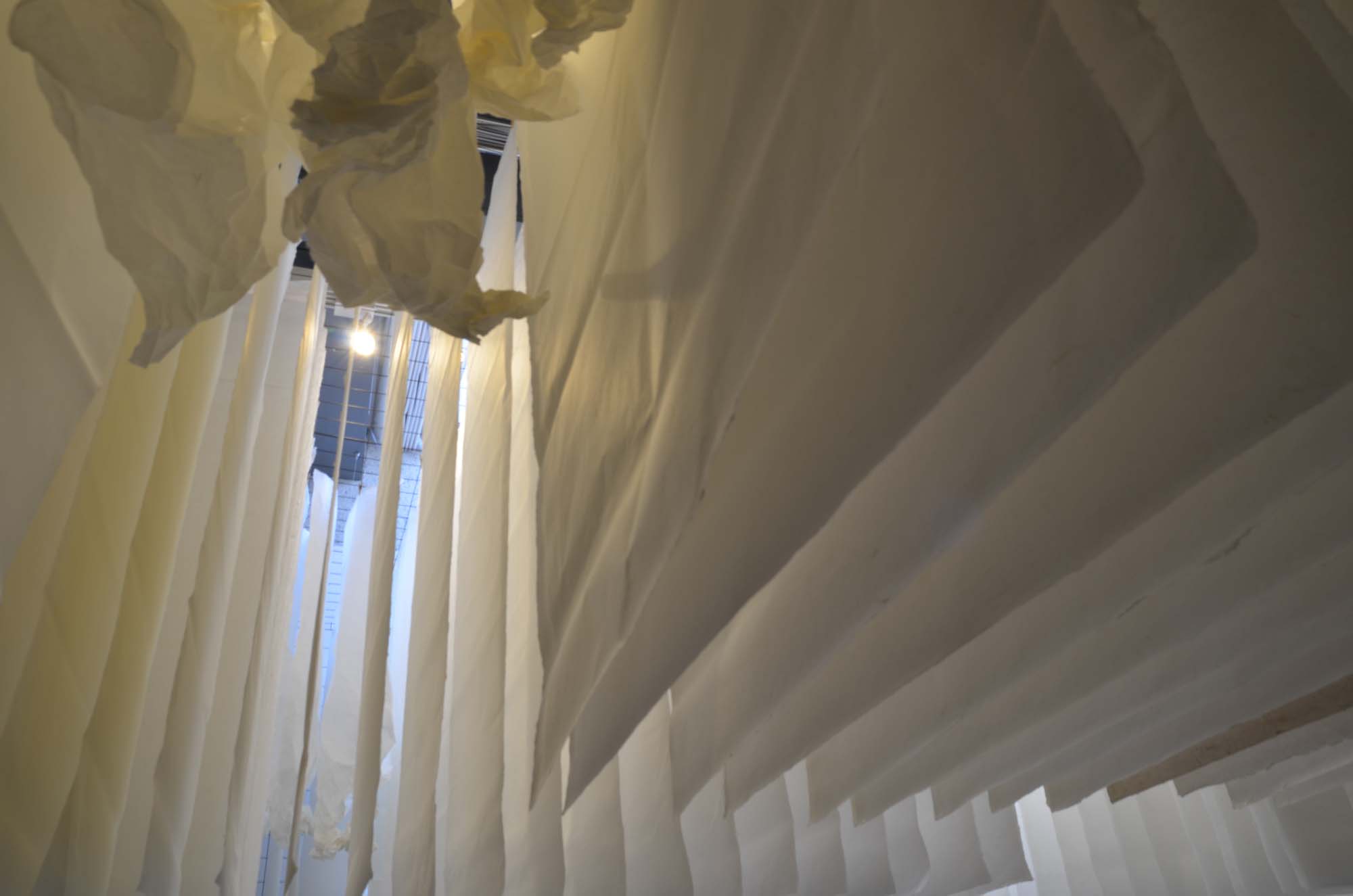
Installation view of Lin Yan’s work at Lakeside Art Museum, Japan. Courtesy of Fou Gallery.

Installation view of Lin Yan’s work at Lakeside Art Museum, Japan. Courtesy of Fou Gallery.
Text by Peiyue Wu
Edited by Sue/CAFA ART INFO



